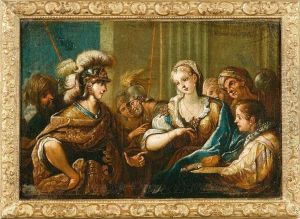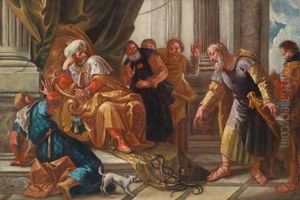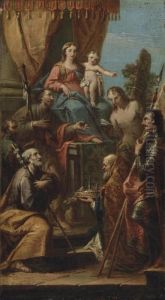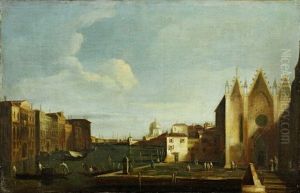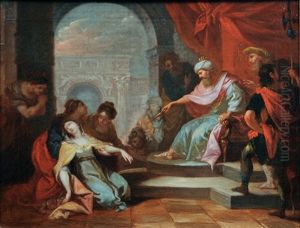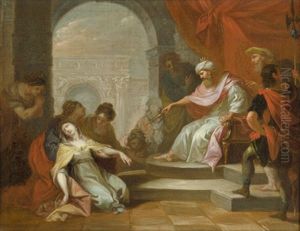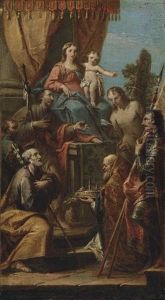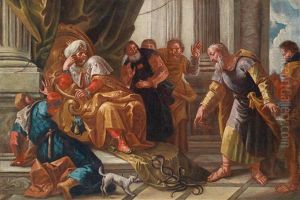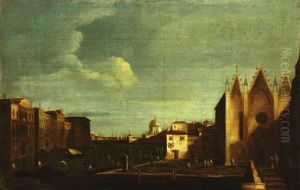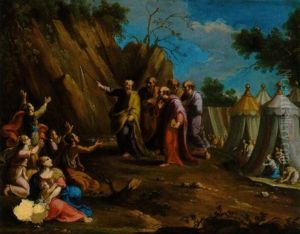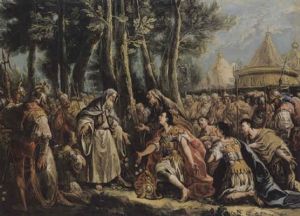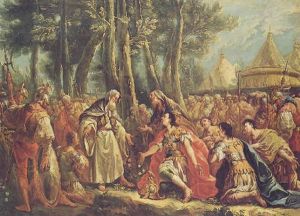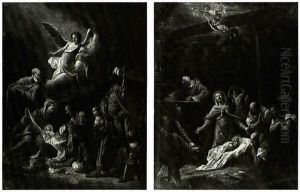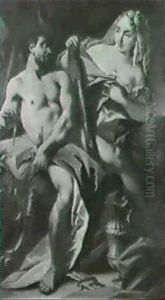Giuseppe Diziani Paintings
Giuseppe Diziani was an Italian painter active during the Baroque period. Born in 1689 in Belluno, in the Venetian Republic, he is particularly noted for his work in the Rococo style, which was characterized by lightness, grace, and decorative elements. Diziani's artistic inclination was evident from a young age, and he was apprenticed to the painter Antonio Lazzarini. He later moved to Venice, where he was greatly influenced by the works of Giovanni Battista Tiepolo, another prominent Venetian painter of the time.
Diziani's work included religious and mythological themes, and he was known for his frescoes and altarpieces. His paintings were characterized by their vibrant color palette and dynamic compositions, which often featured dramatic lighting effects and a sense of movement. Diziani was not only a painter but also a proficient stage designer, which influenced the theatricality of his art.
Throughout his career, Diziani received numerous commissions for his work in churches and palaces, not only in Venice but also in other cities of the Venetian Republic and beyond. His art was well-received, and he became a member of the Fraglia or guild of painters. Despite the success he enjoyed during his lifetime, Giuseppe Diziani's work was later overshadowed by that of his contemporaries, and he did not achieve the same level of lasting fame as some other artists of the Baroque and Rococo periods.
Giuseppe Diziani passed away in 1767. Today, his works can be found in various museums and collections, where they continue to be studied and appreciated for their contribution to the Italian Baroque and the development of the Rococo style.
